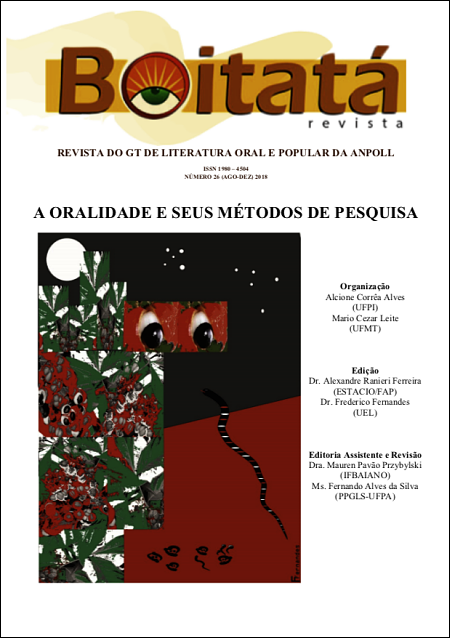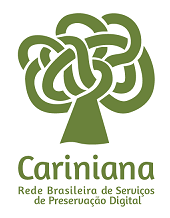Literature and cinema: the narrative functions of Propp in two of the account Sleeping beauty and its implications for the school context
DOI:
https://doi.org/10.5433/boitata.2018v13.e35744Keywords:
Literary Theory, Tale, FilmadaptationAbstract
The tales, regardless of their classification, exert and suffer great influence coming from the cultural and social context, since their creation is directly related to them, due to originating from oral traditions. Thus, like several adaptations that are elaborated taking into account the many transformations occurred in the context of the reader, the tests are considered of extreme relevance for society and for school teaching. Thus, the present research has as main objective, the analysis from the perspective of the functional model of Purpose for the narratives, a first version of the story sleeping Beautyof Giambattista Basile, whose title was the old era Sun, Moon and Talia and the third film version for the short story, Malévola, which features screenplay by beauty Woolverton and direction by Robert Stromberg, and is a form of application in the classroom. The research is classified as qualitative of bibliographic character. In order to carry out the research we use the theoretical-methodological approach in the field of scientific research, the works of Bortone-Ricardo (2008), Fachin (2001) and Gil (1999), in the field of literary theory, adopting studies by Propp (2006) , in the field of literature, Souza and Cosson (s / d) and Cosson (2009) were the authors investigated.References
BORTONI – RICARDO, Stella Maris. O professor pesquisador: introdução a pesquisa qualitativa. São Paulo: Parábola Editorial, 2008.
BRASIL. Ministério da Educação. Secretaria de educação fundamental. Referencial Curricular Nacional para a Educação Infantil. Brasília: MEC/SEF. 1998.
COSSON, Rildo. Letramento literário: teoria e prática. São Paulo: Contexto, 2006.
FACHIN, Odília. Fundamentos de metodologia. São Paulo: saraiva. 2001.
GIL, Antonio Carlos. Métodos e técnicas de pesquisa social. São Paulo: Atlas, 1999.
PAULA, Elaine de. Crianças e Infâncias: Universos a Desvendar. Programa de Mestrado em Educação da UFSC. I semestre de 2005. Disponível em: www.scielo.br. Acessado em 18 de Dezembro de 2014.
PROPP, V. Morfologia do Conto Maravilhoso. Rio de Janeiro: Forense Universitária, 2006 (1928).
SOUSA. Renata Junqueira; COSSON, Rildo. Letramento Literário: uma proposta para a sala de aula. Universidade Estadual Paulista – UNESP. Disponível em: http://www.acervodigital.unesp.br/bitstream/123456789/40143/1/01d16t08.pdf. Acesso em: 5 jan. 2015.
Published
How to Cite
Issue
Section
License
Copyright (c) 2018 Boitatá

This work is licensed under a Creative Commons Attribution 4.0 International License.
Boitatá esta licenciada com CC BY sob essa licença é possível: Compartilhar - copiar e redistribuir o material em qualquer suporte ou formato. Adaptar - remixar, transformar, e criar a partir do material, atribuindo o devido crédito e prover um link para a licença e indicar se mudanças foram feitas.




















